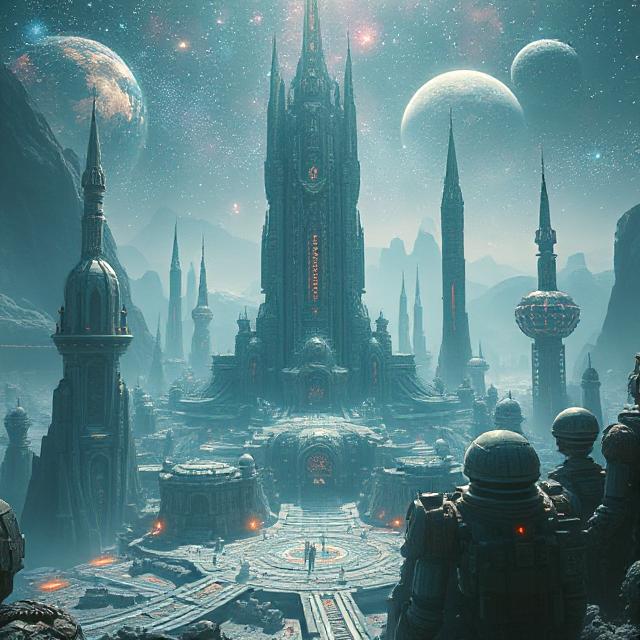We stand at the precipice of an unprecedented convergence—a transformative epoch that will fundamentally redefine the relationship between human intelligence and artificial systems. The next three years, spanning 2025 through 2027, represent not merely another chapter in technological evolution, but rather the opening act of humanity’s most profound metamorphosis since the Industrial Revolution.
2025: The Great Automation Awakening
The year 2025 emerges as the fulcrum of what industry pioneers describe as the “automation cliff”—a seismic shift where autonomous AI agents transcend their current role as sophisticated tools to become genuine digital collaborators capable of independent decision-making and task execution. Unlike the chatbots and assistive technologies that dominate today’s landscape, these autonomous agents represent a quantum leap forward, possessing the capability to interpret complex contexts, adapt dynamically to new information, and execute multi-step workflows without continuous human oversight.able+3
Recent data reveals that over 80 Fortune 500 companies have already deployed autonomous AI agents across at least one business unit, generating financial returns that exceed traditional rule-based automation by a factor of four. These systems are already demonstrating measurable impact across diverse sectors: reducing operational decision latency in logistics by 32%, increasing conversion rates in adaptive sales pipelines by 18-27%, and automating compliance resolution in regulated industries with near-zero escalations.linkedin
The implications extend far beyond incremental efficiency gains. Julia McCoy, CEO of First Movers and a pioneer in AI integration, predicts that by the end of 2025, Fortune 500 companies will have fundamentally restructured their organizational frameworks around hybrid workforces—integrated teams where human managers oversee both human employees and sophisticated AI agents. This transformation represents what McCoy terms the emergence of true “hybrid intelligence,” where the unique strengths of human creativity, emotional intelligence, and strategic thinking combine with AI’s computational power, pattern recognition, and tireless execution capacity.firstmovers+1youtube
The deployment of specialized AI agent networks—what McCoy describes as “agent swarms”—enables organizations to tackle complex challenges through collaborative AI systems that work in concert, each contributing specialized capabilities to solve multifaceted problems. For instance, in logistics operations, these systems are already streamlining supply chain management through real-time optimization, predictive maintenance, and autonomous coordination across multiple operational domains.youtubefirstmovers
2026: The Physical Renaissance of Artificial Intelligence
As we transition into 2026, the digital revolution gives way to the physical renaissance of AI, marked by the emergence of first-generation humanoid robots capable of meaningful interaction with our physical environment. This year represents the materialization of embodied autonomy—AI systems that transcend the digital realm to become active participants in the physical world.automationworld+1youtube
Boston Dynamics and NVIDIA stand at the forefront of this transformation through their groundbreaking collaboration on next-generation AI capabilities for humanoid robots. The integration of NVIDIA’s Jetson Thor computing platform with Boston Dynamics’ Atlas robot creates systems capable of running complex, multimodal AI models that enable sophisticated whole-body and manipulation controllers.youtube+1edisonsmart+1
These developments represent far more than technological novelty. NVIDIA and Foxconn are already discussing the deployment of humanoid robots in manufacturing facilities, with plans to have these systems fully operational by Q1 2026 for the production of NVIDIA’s GB300 AI servers. This marks a profound milestone: AI systems physically building the infrastructure that will power the next generation of artificial intelligence.techstrong
The technological foundation supporting this revolution includes NVIDIA’s Isaac GR00T N1—described as the world’s first open and fully customizable foundation model for general-purpose humanoid reasoning and skills. This system employs a dual-architecture approach inspired by human cognition: a rapid-response “System 1” for immediate reactions and reflexes, combined with a deliberative “System 2” for complex planning and strategic decision-making.edisonsmart
While the initial deployment of these humanoid systems will carry significant costs—similar to the early days of personal computing or smartphones—they signal the beginning of a revolution that will fundamentally alter manufacturing, logistics, healthcare, and countless other industries. The parallel to the iPhone’s introduction is particularly apt: what begins as an expensive technological marvel will rapidly evolve into an indispensable tool that reshapes entire sectors of the economy.youtube
2027: The Dawn of Superintelligent Collaboration
The crescendo of this three-year transformation arrives in 2027 with the anticipated emergence of Artificial Superintelligence (ASI)—AI systems capable of surpassing human cognitive abilities across virtually all domains while possessing the capacity for recursive self-improvement. This milestone represents perhaps the most significant inflection point in human history: the moment when our technological creations become capable of enhancing their own capabilities without direct human intervention.trmcdonald.substack+2
The AI 2027 forecast, developed by former OpenAI researcher Daniel Kokotajlo and a team of leading AI experts, provides a detailed roadmap for this transformation. Their research, informed by extensive tabletop exercises and feedback from over 100 domain experts, suggests that by late 2027, we may witness the emergence of AI systems that are “much better than the best human at every cognitive task”.richardhayes+4
This development creates what researchers term a “recursive improvement loop”—a feedback cycle where AI systems continuously enhance their own capabilities at an accelerating pace. Unlike human-directed improvements, which occur incrementally over months or years, these self-improving systems could potentially achieve breakthrough advances in days or hours, fundamentally altering the trajectory of technological progress.secondthoughts+1
The implications of this transition extend far beyond technological capabilities to encompass the very nature of human civilization. As AI systems become capable of outperforming humans in scientific research, strategic planning, creative endeavors, and problem-solving, we must grapple with fundamental questions about human purpose, economic structures, and societal organization.venturebeat+1
Rather than viewing these developments through the lens of displacement or obsolescence, forward-thinking organizations and individuals are embracing what might be called the “amplification paradigm”—the recognition that AI serves as a multiplier for human capabilities rather than a replacement for human value. This perspective acknowledges that while AI systems excel at computational tasks, pattern recognition, and systematic execution, they cannot replicate the essentially human qualities of empathy, ethical reasoning, cultural understanding, and creative inspiration.forbes+2
The organizations that will thrive in this new landscape are those that recognize AI not merely as a tool to be deployed, but as a collaborative partner that amplifies human potential. This requires a fundamental shift in organizational thinking: from viewing AI as a cost-reduction mechanism to embracing it as a capability enhancement platform that enables human workers to focus on higher-order cognitive tasks, strategic planning, and relationship management.fortune+1
Companies like Databricks have already begun implementing AI Agent Orchestrators—sophisticated management systems that coordinate multiple specialized AI agents while maintaining human oversight and strategic direction. These implementations have achieved remarkable results: 50% reductions in onboarding time, 213% returns on investment, and the transformation of complex processes that once required weeks into tasks completed in days.forbes
The rapid pace of AI advancement creates what economists term a “network effect amplification”—early adopters gain compounding advantages that become increasingly difficult for competitors to overcome. Organizations that embrace AI integration today will possess operational capabilities, institutional knowledge, and competitive advantages that late adopters may find impossible to replicate.firstmovers+1
This dynamic explains why industry leaders like McCoy emphasize the critical importance of immediate action rather than prolonged deliberation. The companies that invest in AI integration now—developing custom solutions, training hybrid workforces, and building AI-native operational frameworks—will establish market positions that compound over time.juliamccoy+1
The transformation extends beyond operational efficiency to encompass entirely new business models and value propositions. Organizations that master AI integration will be capable of delivering personalized experiences, predictive services, and automated solutions at scales previously unimaginable, fundamentally altering customer expectations and competitive dynamics.linkedin+1
Navigating the Convergence Challenges
The magnitude of this transformation inevitably creates substantial challenges that require thoughtful navigation. The integration of AI systems into human workflows demands new management frameworks, ethical guidelines, and governance structures that balance automation benefits with human agency and dignity.fortune+1
Privacy and security concerns become paramount as AI systems gain access to increasingly sensitive information and decision-making authority. Organizations must develop robust frameworks for AI governance that ensure accountability, transparency, and alignment with human values while enabling the flexibility and autonomy that make AI systems effective.forbes
Workforce development emerges as a critical strategic priority. The successful integration of AI requires human workers who understand how to collaborate with artificial systems, leverage their capabilities, and maintain oversight of automated processes. This demands significant investment in training, reskilling, and cultural adaptation.manpowergroup+1
Regulatory and compliance considerations become increasingly complex as AI systems take on roles traditionally reserved for human decision-makers. Industries subject to strict oversight—including healthcare, finance, and aviation—must develop new approaches to validation, auditing, and accountability that accommodate AI decision-making while maintaining safety and regulatory compliance.pragmaticcoders
As we look toward this transformative three-year period, we must recognize that we are not merely witnessing technological advancement—we are participating in the emergence of a new form of civilization where human and artificial intelligence coevolve in symbiotic relationship. The organizations, communities, and individuals who embrace this convergence will shape the trajectory of human development for generations to come.
The path forward requires courage, wisdom, and strategic thinking. It demands that we move beyond fear-based resistance to embrace the profound opportunities that AI collaboration presents while remaining vigilant about the challenges and risks that accompany such rapid transformation.
The future belongs not to those who resist change, but to those who have the vision to see beyond current limitations and the courage to build the infrastructure of tomorrow. As we stand at this historic inflection point, the question is not whether this transformation will occur—the momentum is already unstoppable. The question is whether we will be active participants in shaping this future or passive observers of changes determined by others.
The convergence revolution is not coming—it is here. The next three years will determine whether we rise to meet this moment with the wisdom, preparation, and collaborative spirit necessary to ensure that the age of human-AI civilization serves the flourishing of all.
In this epochal transformation, the first movers will not merely survive—they will define the very nature of success in the age of artificial intelligence. The window for positioning ourselves at the forefront of this revolution is narrowing with each passing day. The time for bold action is now.
- https://able.co/blog/how-to-use-agentic-ai-systems-to-scale-like-a-fortune-500
- https://www.linkedin.com/posts/nitish-garg90_100-use-cases-of-agentic-ai-activity-7340382023779303426-f5UN
- https://www.pragmaticcoders.com/resources/ai-agent-statistics
- https://fortune.com/2025/02/07/artificial-intelligence-ai-coworkers-new-hybrid-organization/
- https://firstmovers.ai/hire-julia-mccoy/
- https://www.youtube.com/watch?v=pjBFJ9hqpfY
- https://firstmovers.ai
- https://www.automationworld.com/factory/robotics/news/55288563/boston-dynamics-boston-dynamics-and-nvidia-collaborate-on-next-generation-ai-capabilities-for-humanoid-robots
- https://techstrong.it/featured/nvidia-foxconn-discuss-deploying-humanoid-robots-at-houston-facility/
- https://www.youtube.com/watch?v=vT-NyxPUrJw
- https://www.youtube.com/watch?v=HMhl45eCfDU
- https://edisonsmart.com/nvidia-supercharges-the-development-of-humanoid-robots-with-ai/
- https://trmcdonald.substack.com/p/ai-2027-a-glimpse-into-the-future
- https://www.richardhayes.co.nz/ai-2027/
- https://secondthoughts.ai/p/ai-2027
- https://venturebeat.com/ai/2027-agi-forecast-maps-a-24-month-sprint-to-human-level-ai/
- https://ai-2027.com
- https://www.forbes.com/sites/jeannemeister/2025/02/15/the-rise-of-the-hybrid-workforce-humans-and-ai-working-together/
- https://fortune.com/2025/06/25/business-leadership-ai-era/
- https://www.linkedin.com/pulse/how-future-proof-your-business-ai-next-wave-workplace-cliff-k-locks-d8w1e
- https://juliamccoy.ai
- https://www.manpowergroup.com.sg/workforce-resources/transformation/the-future-is-here-as-the-landscape-of-work-changes-forever
- https://fortune.com/2025/08/07/ai-corporate-org-chart-workplace-agents-flattening/
- https://www.crossover.com/resources/remote-hybrid-work-policies-at-fortune-500-companies
- https://www.youtube.com/watch?v=M8qtzA_6A2c
- https://www.flexos.work/learn/deeper-dive-into-hybrid-work-with-henrik-jarleskog


